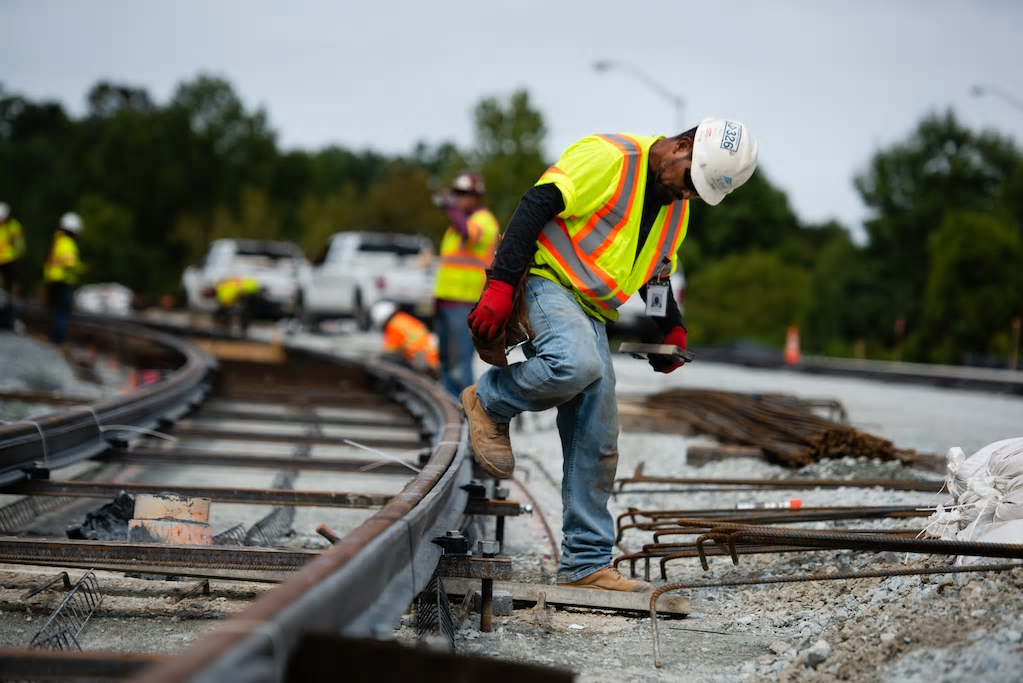
Stop throwing good taxpayer money after the Purple Line
Originally published in the Washington Post
Maryland’s leaders sure do love a good boondoggle. The Old Line State’s latest fiasco is the Purple Line project — 16.2 miles of Metro track connecting Bethesda and New Carrollton. Initially lauded as the nation’s most ambitious public-private partnership transportation project, the Purple Line is a runaway train burning taxpayer dollars for fuel.
Since 2016, when Maryland reached a $5.6 billion agreement with the Purple Line Transit Partners, the project has been beset by poor assumptions and mistaken cost projections. But advocates for the rail line insist that it must go forward because so much money has already been spent.
The Purple Line pushers are wrong again. Now it’s time to stop throwing good money after bad and scrap it.
The Purple Line project was derailed yet again when the Purple Line Transit Constructors, companies that are building the line, announced on May 1 that it is leaving the project because of extensive delays and cost overruns. According to Scott Risley, the Purple Line construction team’s project manager, delays related to multiple lawsuits and environmental approvals have added 976 days to the project’s timeline and $519 million in costs overruns — so far.
While a 25 percent cost overrun seems like a lot, it is not a big surprise that a light rail project would run over budget. As early as 2015, transportation expert Randal O’Toole warned in a study for the Maryland Public Policy Institute that “cost overruns for light rail are the rule rather than the exception.” According to the study, average cost overruns for a light rail projects in the United States are around 44 percent.
Other mistakes that guided Maryland’s decision to build the Purple line include overly optimistic ridership predictions and dead-wrong cost-effectiveness calculations. While the Purple Line expects to carry 65,000 riders per day by 2030, The Post pointed out in 2015, “how those [ridership prediction] numbers were calculated, and how realistic they are, remains a mystery to the taxpayers who will pay for the 16-mile line linking Prince George’s and Montgomery counties.” In addition, the Maryland Department of Transportation’s draft environmental impact statement indicates that both the cost per rider and the cost per hour saved for light rail are much higher than for bus improvements.
How will Maryland respond to the Purple Line’s growing quagmire?
The most likely but worst possible response would be for Maryland to find another private partner who can take over the project. After all, the state has already spent money to begin the construction. However, this would be a classic misuse of the “sunk cost” argument that is both fundamentally flawed and dangerous. It is more rational to walk away from a project if the incremental benefits are less than the incremental costs. But how many dollars Maryland has already spent on the project is irrelevant to this analysis.
The truly important figure to consider is how much the line would continue to cost the state when construction is finished. Based on the terms of the contract with the Purple Line Transit Partners, it would cost the state at least $150 million annually to operate and maintain it. This adds up to $4.5 billion over 30 years. Electricity to operate the line would cost an additional $2.6 million annually.
The question is: Will the Purple Line bring back to taxpayers the billions of dollars of investment through economic development and increased job opportunities? That outcome is highly unlikely. Even if some development does arrive, it will take decades for the area around the Purple Line to change, when many of the businesses along the line that it purports to benefit won’t even be around to see it open.
The fleeting and likely false promise of improved mobility for Maryland is heavily outweighed by the certainty of higher tax bills for Marylanders. The hard but right choice is to stop shoveling taxpayer cash into the Purple Line’s ravenous engines and abandon the project. It is not too late for Maryland to walk away. Throwing good money after bad will not redeem this boondoggle for taxpayers.
Carol Park is a senior policy analyst at the Maryland Public Policy Institute. Sean Kennedy is a visiting fellow at the Maryland Public Policy Institute.
Randal O’Toole: Don’t build the Purple Line
Ralph Bennett: The case for the Purple Line
The Post’s View: The Purple Line is fading to black
The Post’s View: The Purple Line, resurrected
IMAGE: A contruction worker helps lay the first 1680 feet of track for the Purple Line on Sept. 5. (Sarah L. Voisin/The Washington Post)






